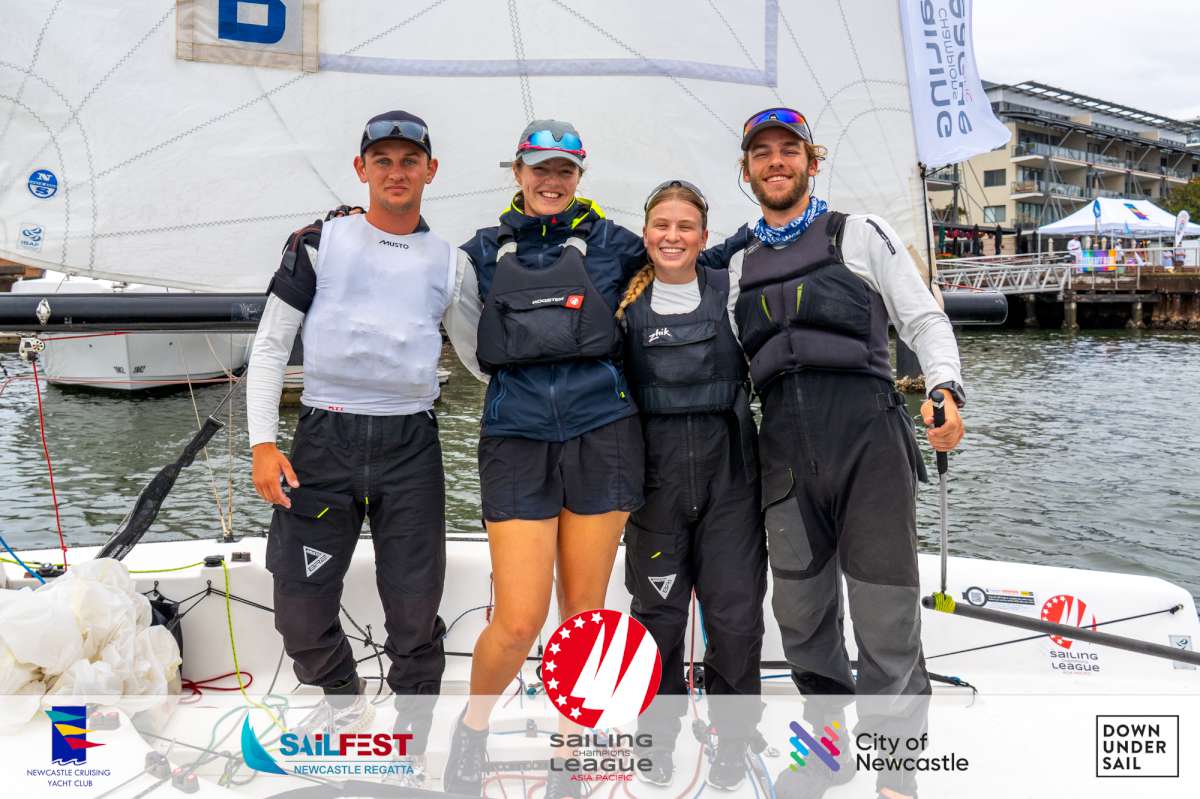The 29th Atlantic Rally for Cruisers (ARC) set sail today bound for Saint Lucia following a delayed start due to strong winds locally in the harbour of Las Palmas de Gran Canaria yesterday. For only the third time in the rally's history, the decision was made to delay the start, initially planned for 12:30 on Sunday 23 November by 20 hours. The ARC 2014 fleet remained in port for an extra night, and were greeted this morning with a fine NE breeze providing a swift departure for the first part of the passage across the Atlantic. In total, 176 boats and 1020 people, including 27 children aged under 16, are sailing with the route directly to Saint Lucia in this year's edition of the world's most popular transocean rally.
Delaying the start
Strong winds blowing through the harbour of Las Palmas caused ARC organisers World Cruising Club to announce a delay to the start of ARC 2014. Whilst the front that brought four days of heavy rain squalls to Gran Canaria passed through, locally strong winds made it unsafe to manoeuvre boats in the harbour to set off on schedule. The majority of ARC boats are family cruisers, who will have a much nicer start to their Atlantic crossing after the delayed start.
First boats to cross the start line
While the ARC is a cruising rally, there is a start and finish line, and the boats are split into divisions according to size, type and competition. Two boats opted to depart Las Palmas early, so 174 yachts sailing under the flags of 24 nations crossed today's start lines.
At 10:15UTC the postponement flag was lowered ahead of the start of the Racing Division. 28 boats jostled for position on the start line laid across the entrance to the harbour of Las Palmas. It was too close to call for the Committee Boat as the racing fleet powered across the start line; Italian FY 61 Tyke and Ross Applebey's Lightwave 48 Scarlet Oyster crossed the line together as Farr 100 Leopard by Finland, powered through right behind them. Spinnakers and gennakers were put to full use as the racers gybed out to seaward and away from the coast of Gran Canaria to find clear air away from the island's wind acceleration zone.
The cruising division is the largest group of ARC yachts, with 116 boats, and were joined for the second start by 24 multihulls and 6 boats in the Open division. By their start at 11:00, a fine NE breeze filled in to a steady 15-20 knots, and the forecast ahead promises good tradewind sailing for their first days at sea. Aphrodite, a Swan 46 was first to cross the line, followed by Norwegian Jeanneau Sun Odyssey 54DS Summer Star and Hallberg Rassy 54 Bluewater Mooney sailed by Wilhelm & Monica Klaas from Germany.
ARC crossing record
All boats are now on their way to Saint Lucia, 2,700 nautical miles to the west. The weather forecast suggests good north-easterly trade winds for the first few days, which will mean a fast sail south towards the Cape Verdes for the cruisers, slowing later into the passage.
The ARC crossing record is 10 days, 21 hours, 25 minutes and 10 seconds, set by Caro a Knierim 65 in ARC 2013. This is likely to be under serious threat from 100 foot super maxi Leopard by Finland. Leopard is sailing with a crew of 23 in ARC 2014, and has a considerable history of conquering Atlantic speed sailing records that will make her one to watch, albeit briefly, on this year's Fleet Tracker.
Farewell to Las Palmas
In the two weeks of ARC activities in Las Palmas, the boats and crews become an important part of the city, and they always receive a warm send-off. Boats left the docks accompanied by thumping salsa beats from the PA system of the fuel dock, and calls of support from staff at businesses around the marina, as well as crowds of well-wishers lined the seawall to wave off the boats on their Atlantic adventure. Many crews joined in the party mood wearing coloured wigs, waving flags and even a trumpet serenade from the crew of Amel Maramu Tinia. The Tourist Board of Gran Canaria, the Port Authority of Las Palmas, and the city government of Las Palmas, have been wonderful hosts to ARC participants for the past two weeks and it is their continued support that makes the atmosphere in the lead up to start day so spectacular.
Follow the fleet
All ARC boats are fitted with YB Tracking satellite trackers, allowing family and friends to follow the fleet from the comfort of home. As well as position, the online Fleet Viewer displays heading, speed and boat information. Wind direction and speed is also shown. Follow the fleet online at http://www.worldcruising.com/arc/eventfleetviewer
Arrival in Saint Lucia
The majority of boats will take 18-21 days to make the 2700 nautical mile Atlantic crossing, arriving in Rodney Bay Marina, Saint Lucia.
Whatever time they make landfall, every boat will be met at the dock by Saint Lucia Tourism and World Cruising Club staff bearing a welcome rum punch and cold drinks. There is a full schedule of events in Rodney Bay for all ARC crews and their friends and families, culminating in the ARC prize giving on 20 December.
– ARC Media
























